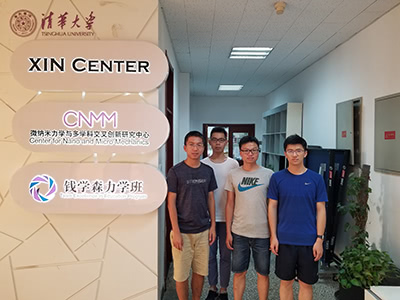By: The Computing for Clean Water team
Tsinghua University
25 Jul 2017
Summary
Dr. Ming Ma, one of the original members of the Computing for Clean Water research team, has created his own lab at Tsinghua University. Dr. Ma and his team continue to analyze the data generated by the project. Learn more about their current work and plans for the future in this update.
Background
The Computing for Clean Water project was created to provide deeper insight on the molecular scale flow of water through a novel class of filter materials. Thanks to the millions of virtual experiments that the team was able to run on World Community Grid, they discovered conditions under which water can pass through tiny carbon nanotubes much more efficiently. This groundbreaking understanding of a fundamental physical process could help improve access to clean water for millions of people through more efficient water filtration and desalination, and also may have applications in clean energy and medicine.

The team at Tsinghua University includes (left to right) Ming Ma, Kunqi Wang, Wei Cao, and Jin Wang. Not pictured: Yao Cheng
A Growing Team
It has been one year since the main team member, Dr. Ming Ma, returned to Tsinghua University, China, after doing research at University College London and Tel Aviv University. During the past year, as an Associate Professor in the Department of Mechanical Engineering, Dr. Ma recruited four new researchers as members of the team with the help from Prof. Quanshui Zheng, the leader of the Computing for Clean Water team. The new team members include one postdoc, Dr. Wei Cao; and three PhD students: Jin Wang, Kunqi Wang, and Yao Cheng.
Next Steps
The team is now working on two main tasks. The first task is to improve the algorithm used in the previous study (see the reference below) by incorporating new techniques developed during the last three years, and to implement them into LAMMPS, a molecular dynamics software. The second task is to investigate new systems with the algorithm being developed. With these tasks finished, the team wishes to bring new, interesting information into the volunteer computing community.
We thank everyone who supported Computing for Clean Water, and hope to work with you again in the near future.
Reference
M. Ma, F. Grey, L.M. Shen, M. Urbakh, S. Wu, J.Z. Liu, Y.L. Liu, Q.S. Zheng, Water transport inside carbon nanotubes mediated by phonon-induced oscillating friction, Nature Nanotech., 10 (2015) 692-695
![[ TSBT's Pirate ] [ TSBT's Pirate ]](./images/ranks/British Army Ranks/Small Ranks/17_General.gif)
